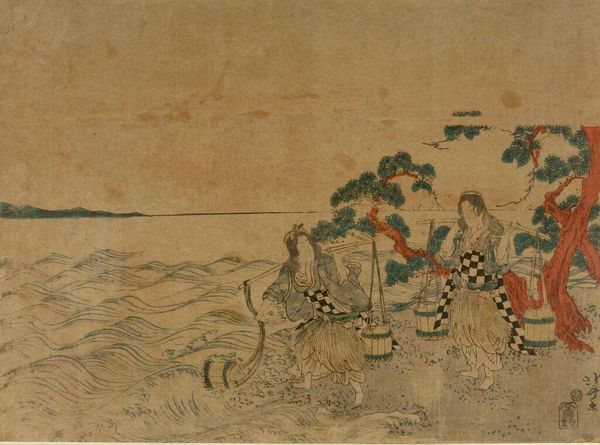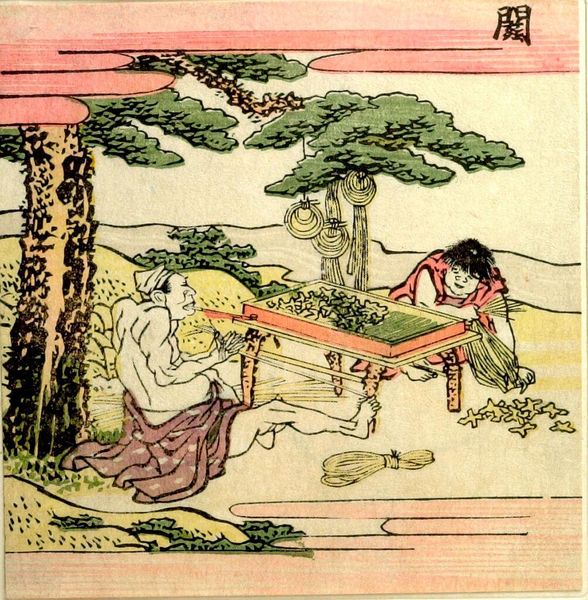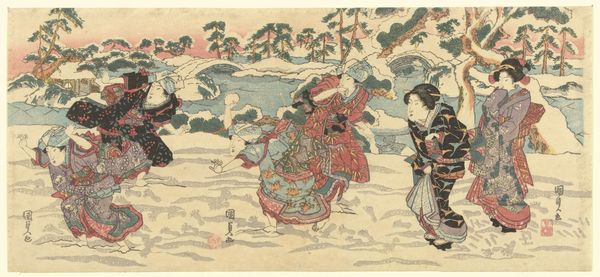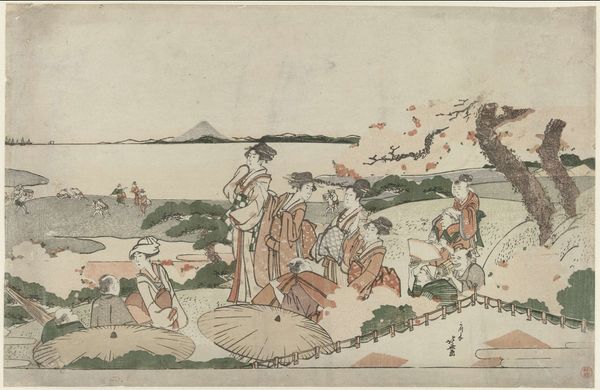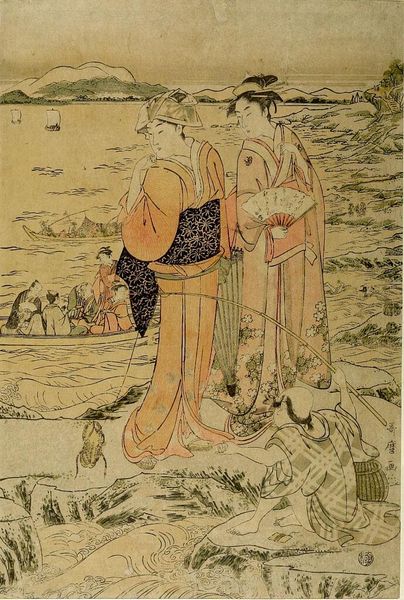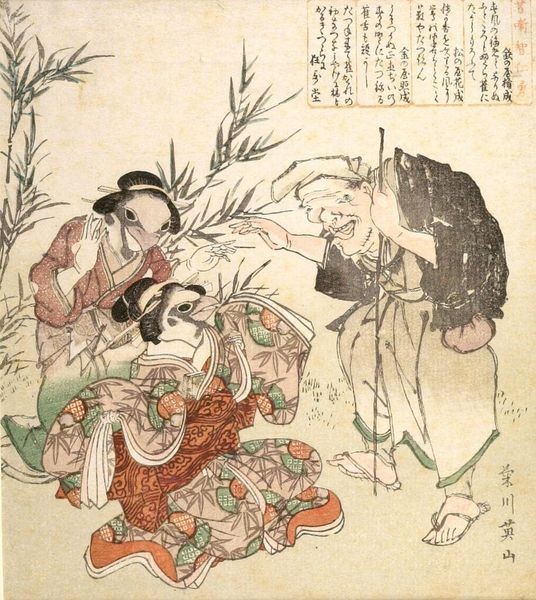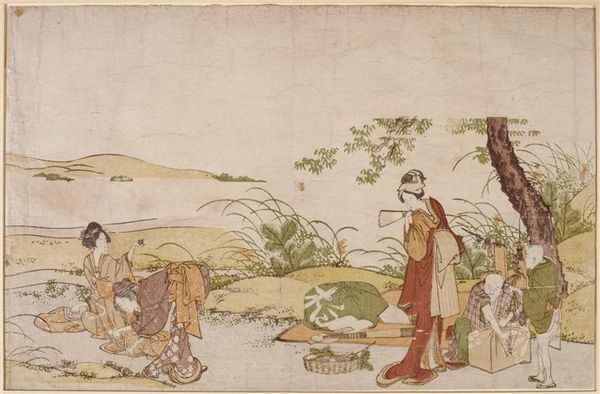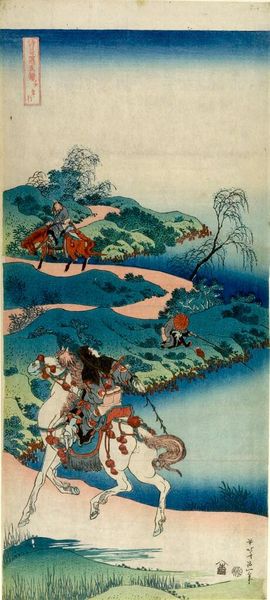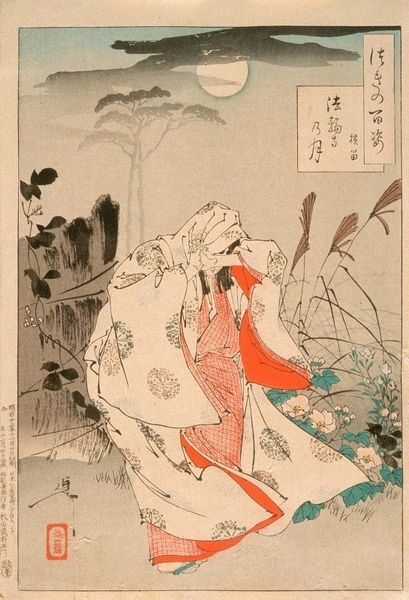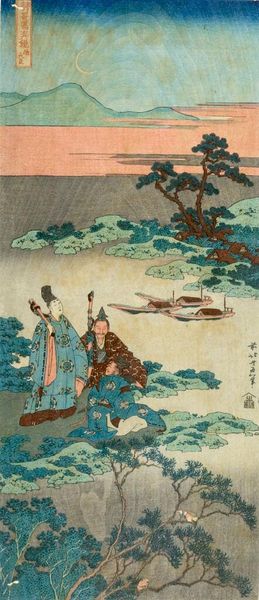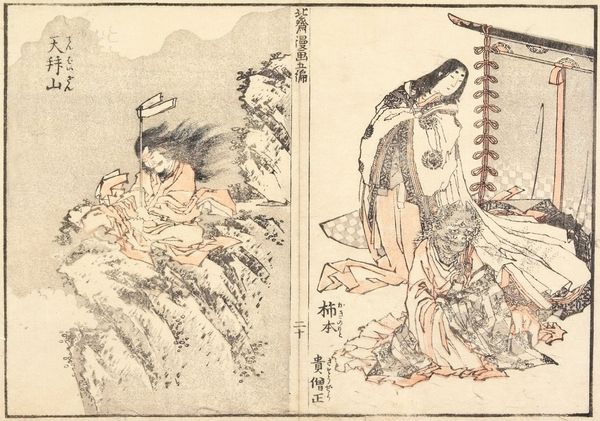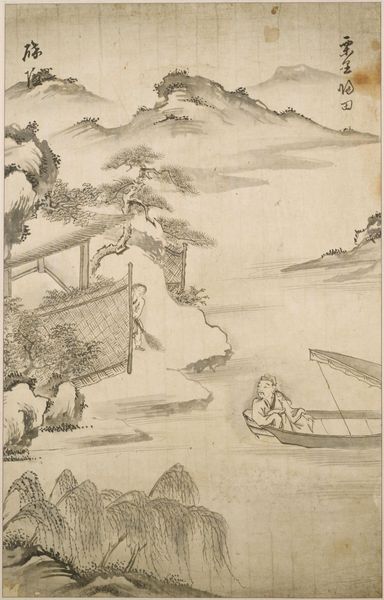
print, woodblock-print
#
portrait
#
ink painting
# print
#
asian-art
#
landscape
#
ukiyo-e
#
figuration
#
woodblock-print
#
erotic-art
Copyright: Public domain
Curator: This is Kitagawa Utamaro’s woodblock print, "Awabi Divers," created around 1788. What’s your initial reaction? Editor: The print has a muted quality, a delicacy of line. But it's unsettling to see these nude figures presented in what feels like an industrious, practical setting. The erotic and the everyday intertwine strangely here. Curator: Indeed. Ukiyo-e prints like this often present layered meanings. The Awabi, or abalone divers, held a fascinating position in society and art. Editor: Considering the materiality, woodblock printing allowed for the mass production of these images, democratizing access to art in a way. How do the materials speak to the piece's context? Curator: Absolutely. And notice how Utamaro uses the medium itself to create textures, particularly in the water and foliage. He creates depth with the layered impressions. More subtly, the abalone itself was understood to hold significant symbolic value… Editor: A luxury food item then. Was the work directed toward a male, wealthier consumer, given the nude female forms and focus on a delicacy like abalone? Curator: Quite possibly, as Ukiyo-e were patronized by wealthy merchants and samurai classes. However, these figures also evoke associations with sea goddesses and folklore, merging sensuality with broader spiritual themes. This interplay allows for multiple interpretations, shifting from earthly pleasures to symbolic representation. Editor: Interesting how what appears straightforward at first glance—nude female laborers—unveils layers of socio-economic, sensual and spiritual significance once we consider its historical context. Curator: Yes, the print encourages us to reflect upon what lies beneath the surface of seemingly simple scenes of labor. Editor: I’ll certainly be giving more thought to the layers of production and symbolism within this delicate image of "Awabi Divers." Curator: Agreed. Utamaro leaves us contemplating the complex relationships between labor, sensuality, and the symbolic potential of everyday life in eighteenth-century Japan.
Comments
No comments
Be the first to comment and join the conversation on the ultimate creative platform.
